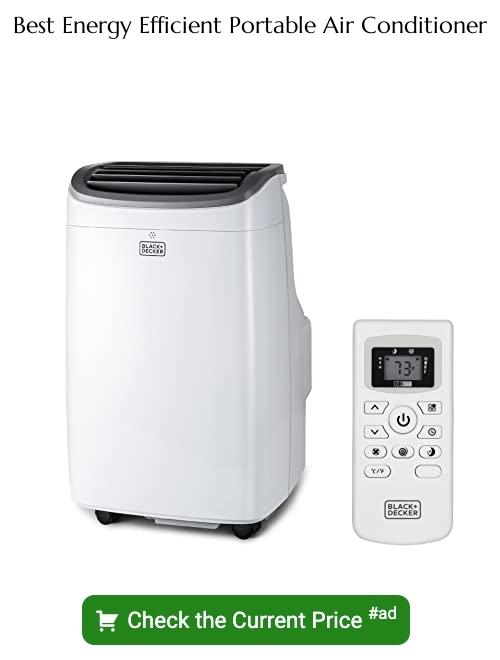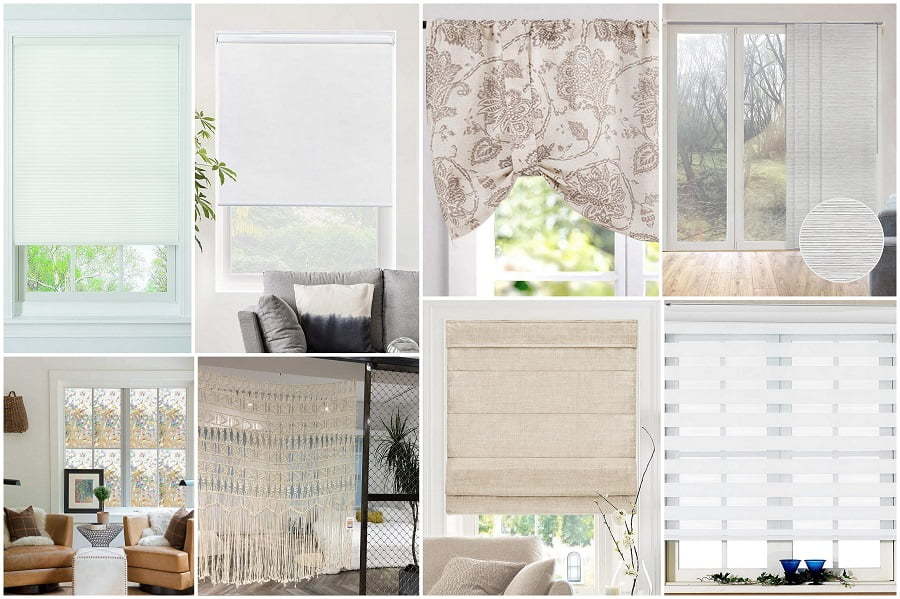Last updated on
Discover the world of innovative alternatives to traditional HVAC systems, as we dive into energy-efficient and eco-friendly options for maintaining a comfortable indoor climate.
Are you tired of paying exorbitant energy bills every month? Are you looking for alternative ways to keep your home cool during the summer and warm during the winter without relying on traditional HVAC systems? Look no further! In this article, we will explore some budget-friendly alternatives to HVAC systems that will not only save you money but also add a unique touch to your home decor. From natural ventilation techniques to innovative heating solutions, we’ve got you covered.
So sit back, relax, and let’s dive into the world of alternative home cooling and heating methods.
Passive Solar Heating
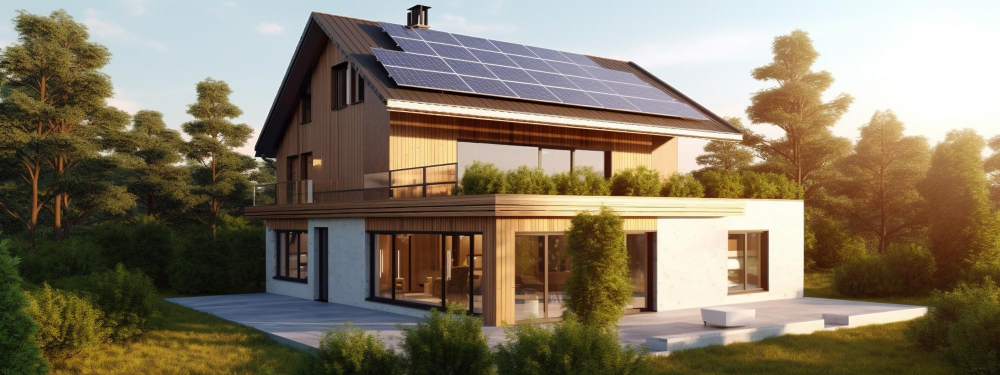
Passive solar heating is a cost-effective and eco-friendly way to heat your home. It involves using the sun’s energy to naturally warm up your living space without relying on any mechanical or electrical systems.
This technique works by strategically positioning windows, walls, and floors in a way that maximizes sunlight exposure during the winter months while minimizing it during summer.
To achieve passive solar heating, you need to ensure that your home has adequate insulation and thermal mass materials such as concrete or brick walls which can absorb heat from the sun during the day and release it at night when temperatures drop.
By incorporating passive solar design principles into your home’s architecture, you can significantly reduce energy consumption while enjoying comfortable indoor temperatures all year round.
Geothermal Heating and Cooling

This system works by circulating water through underground pipes, where it absorbs the earth’s warmth in winter and releases excess heat in summer. Geothermal systems can be installed vertically or horizontally depending on your property size, soil type, and climate conditions.
One of the biggest advantages of geothermal heating and cooling is its energy efficiency. According to Energy Star, geothermal systems use up to 50% less energy than conventional HVAC units while reducing greenhouse gas emissions by up to 40%.
These systems require minimal maintenance compared with traditional air conditioning units.
Another benefit of geothermal heating and cooling is its longevity. The underground pipes used for this system typically last for over 50 years without needing replacement or repair.
Radiant Floor Heating
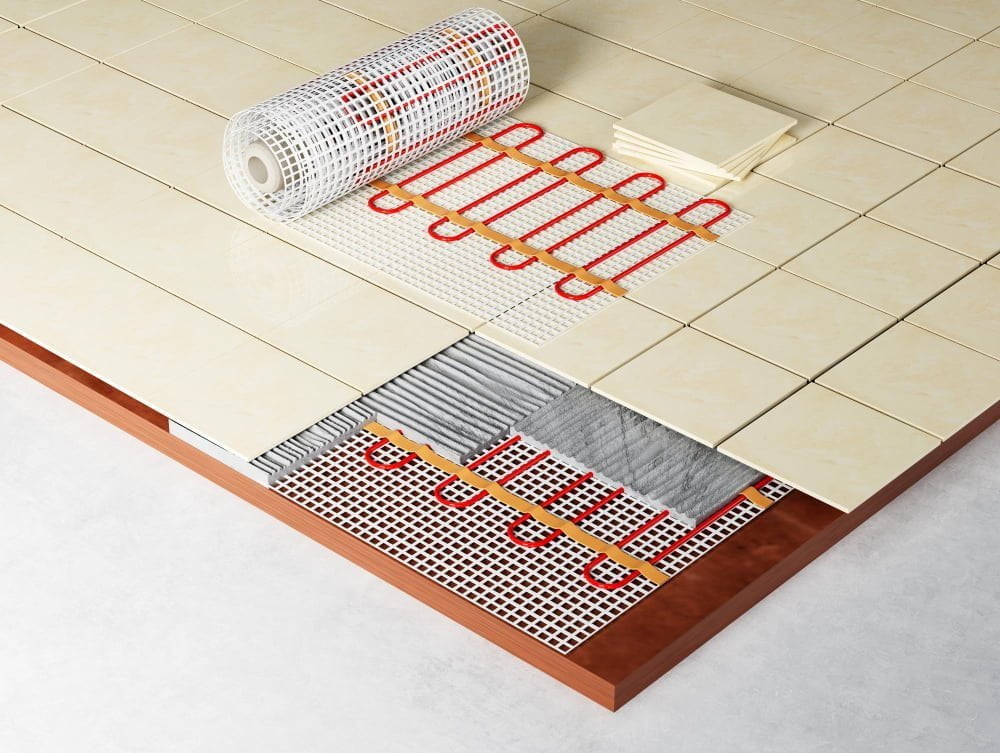
This system works by installing pipes or electric wires beneath your flooring to heat the space evenly and efficiently. Radiant floor heating is an excellent alternative to traditional HVAC systems because it doesn’t rely on forced air, which can cause dust and allergens to circulate throughout your home.
This type of system is energy-efficient since it heats objects in the room rather than just the air itself.
One of the most significant benefits of radiant floor heating is its ability to provide consistent warmth without creating hot or cold spots in a room. It’s also incredibly quiet since there are no fans or blowers involved in its operation.
While installing radiant floor heating may require some upfront investment, it can save you money over time by reducing your energy bills significantly.
Evaporative Cooling
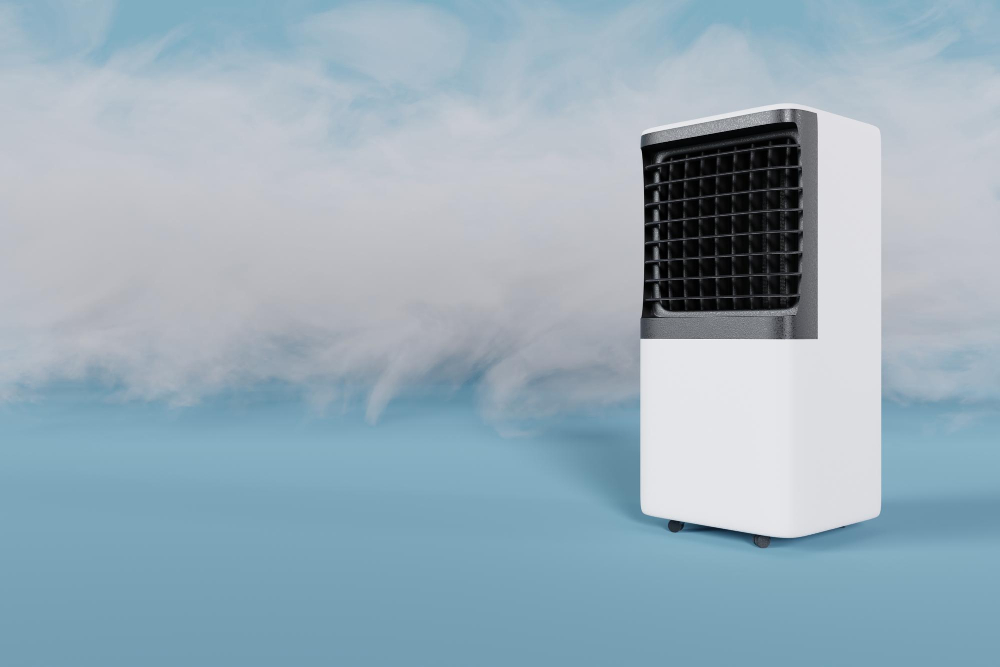
This method works best in dry climates, where humidity levels are low and outdoor temperatures are high. The process involves drawing hot outside air through moistened pads or filters, which cools the air as it evaporates the water from them.
The cooled air is then circulated throughout your home using fans.
One of the main advantages of evaporative cooling over traditional HVAC systems is its energy efficiency. Evaporative coolers use up to 75% less electricity than conventional AC units, resulting in significant savings on your monthly energy bills.
Another benefit of this system is that it adds moisture to dry indoor environments, making it ideal for people with respiratory problems such as asthma or allergies.
However, there are some limitations when considering an evaporative cooler for your home. As mentioned earlier, this system only works effectively in areas with low humidity levels; therefore if you live in a humid climate area like Florida or Louisiana you may not find much relief from an evaporative cooler during summer months.
Ductless Mini-Splits
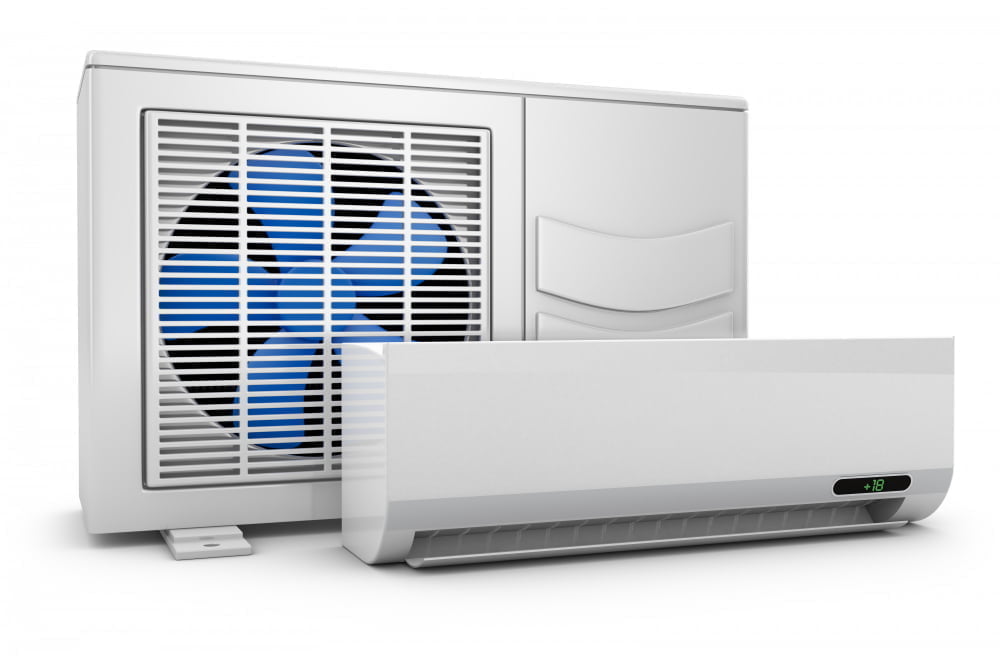
These systems consist of an outdoor unit that is connected to one or more indoor units via refrigerant lines. The indoor units can be mounted on walls or ceilings and are controlled by a remote control.
One of the main advantages of ductless mini-splits is that they allow you to create different temperature zones in your home, which means you can cool or heat only the rooms that need it. This not only saves energy but also provides greater comfort as each room’s temperature can be adjusted according to individual preferences.
Another advantage is their ease of installation compared with traditional HVAC systems since there’s no need for ductwork; this makes them ideal for retrofitting older homes without major renovations.
In terms of maintenance, ductless mini-splits require regular cleaning and filter replacement like any other air conditioning system; however, they tend to have longer lifespans than central ACs due in part because they don’t suffer from the same wear-and-tear issues associated with forced-air heating/cooling through ducts.
Nighttime Ventilation

By opening windows and doors at night, you can allow cooler air to circulate throughout your home, reducing the need for air conditioning during the day. This technique works best in areas with low humidity levels where temperatures drop significantly at night.
To maximize nighttime ventilation, it’s important to strategically place windows and doors throughout your home. Cross-ventilation is key; this means that you should have openings on opposite sides of a room or house so that fresh air can flow through easily.
Another tip for maximizing nighttime ventilation is using window coverings strategically. During hot days, keep curtains or blinds closed on south-facing windows to prevent heat gain from sunlight; then open them up at night when temperatures are lower.
Heat Recovery Ventilators
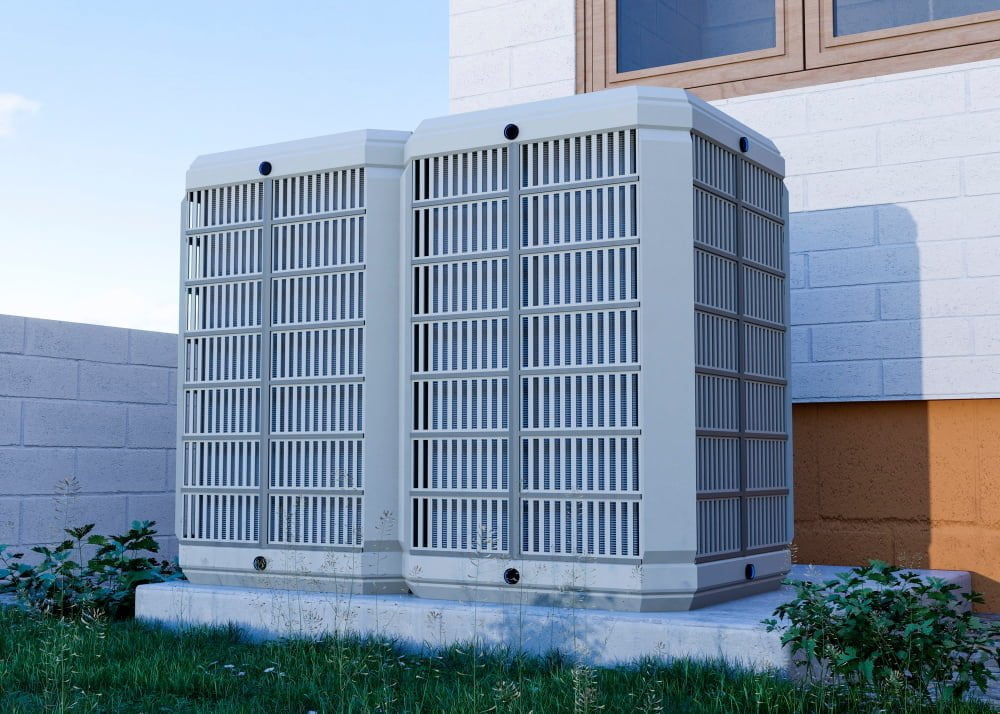
They work by exchanging stale indoor air with fresh outdoor air while simultaneously recovering the heat from the outgoing air and transferring it to incoming fresh air. This process helps maintain a comfortable indoor temperature without relying on energy-consuming heating or cooling systems.
HRVs come in various sizes and designs, making them suitable for different types of homes and buildings. They can be installed as standalone units or integrated into existing HVAC systems, depending on your needs.
One significant advantage of HRVs is their ability to improve indoor air quality by removing pollutants such as dust, allergens, and other harmful particles that may cause respiratory problems. They help reduce humidity levels in your home during summer months when excess moisture can lead to mold growth.
Heat Recovery Ventilators are an eco-friendly solution that provides efficient ventilation while reducing energy consumption costs associated with traditional HVAC systems.
Building Insulation
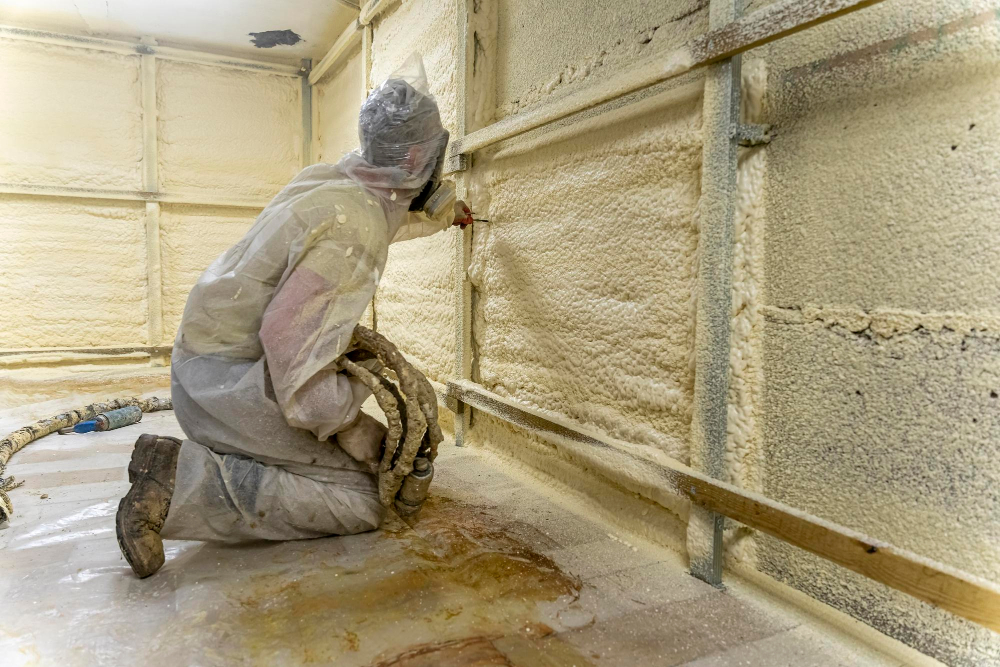
Proper insulation helps keep warm air inside during winter and cool air inside during summer, reducing the need for heating or cooling systems. It also prevents drafts, which can make your home feel uncomfortable even when using HVAC systems.
There are several types of insulation materials available in the market today, including fiberglass batts, cellulose fiber, spray foam insulation among others. Each type has its unique advantages and disadvantages depending on factors such as cost-effectiveness and environmental impact.
When choosing an insulating material for your home consider factors like R-value (the measure of thermal resistance), moisture resistance properties as well as fire safety ratings to ensure you get maximum benefits from it while keeping safety in mind.
Thermal Mass Techniques
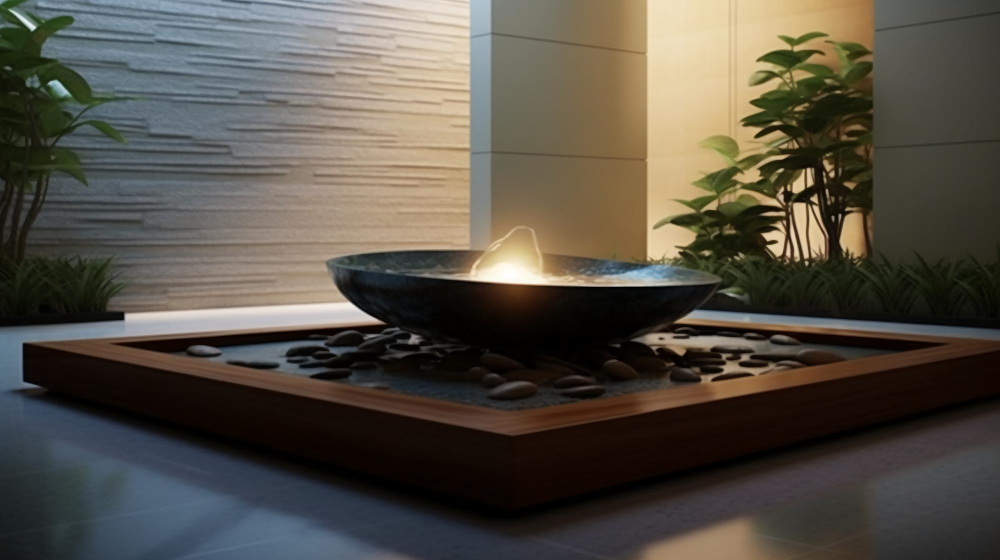
This technique involves using materials that can absorb and store heat, such as concrete, brick, or stone walls. During the day when the temperature is high, these materials absorb heat from the surrounding air and keep your home cool.
At night when outdoor temperatures drop below indoor ones, they release this stored heat back into your home.
One of the most popular thermal mass techniques is Trombe Walls – a passive solar heating system that uses a combination of glass and masonry to capture sunlight during winter months while blocking it out in summer months.
Another example of thermal mass techniques includes incorporating water features like fountains or ponds inside homes which help maintain cooler temperatures by absorbing excess humidity in hot weather conditions.
Cool Roofs
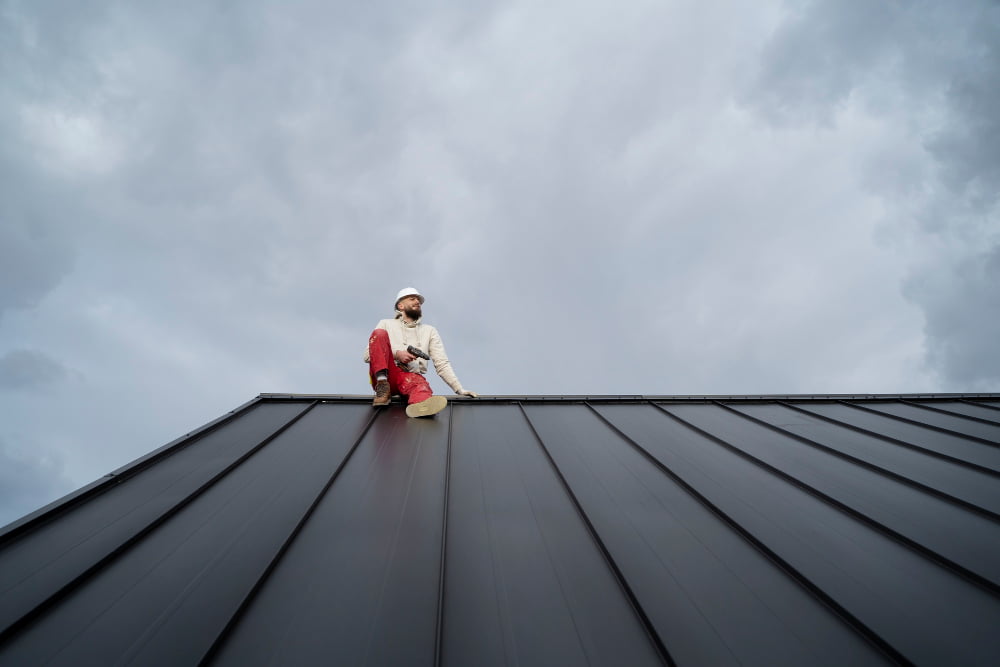
One way to combat this is by installing a cool roof. A cool roof is designed to reflect more sunlight and absorb less heat than a standard roof, which helps keep your home cooler and reduces the need for air conditioning.
There are several types of materials that can be used for cool roofs, including reflective coatings or tiles made from highly reflective materials like metal or asphalt shingles coated with special pigments that reflect solar energy. These roofs not only help reduce indoor temperatures but also lower energy bills by reducing the amount of electricity needed for cooling.
In addition to their practical benefits, cool roofs also come in various colors and styles that add an aesthetic appeal to your home’s exterior design.
Green Roof Systems
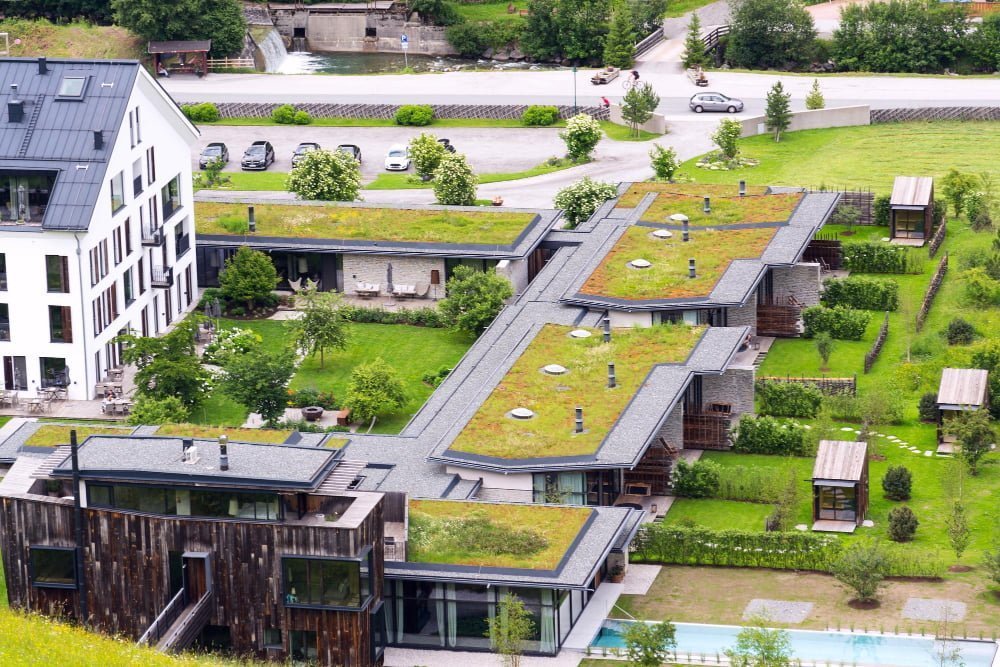
Green roofs are essentially rooftop gardens that provide insulation, reduce stormwater runoff, and improve air quality. They also help regulate indoor temperature by absorbing heat from the sun during summer months and providing insulation during winter months.
Green roofs can be installed on both residential and commercial buildings with flat or sloped rooftops. The plants used in green roof systems are carefully selected for their ability to thrive in harsh rooftop conditions such as high winds, intense sunlight exposure, and limited soil depth.
In addition to being an eco-friendly option for maintaining comfortable indoor temperatures without relying on HVAC systems, green roofs also add aesthetic value to your home decor while reducing your carbon footprint.
Energy Recovery Ventilation
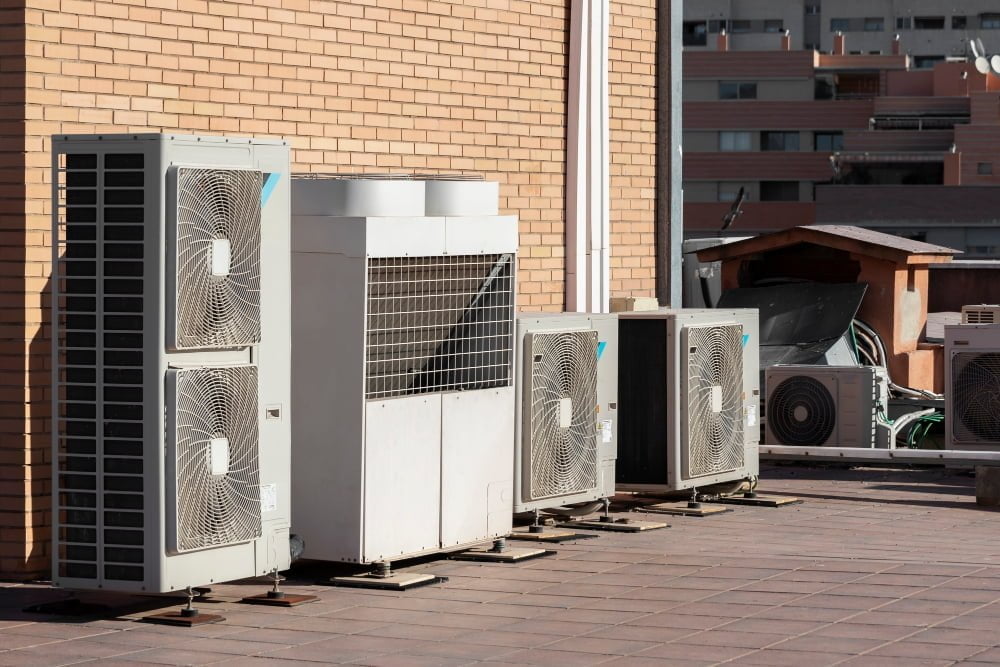
ERV works by exchanging the stale indoor air with fresh outdoor air while recovering the heat or coolness from the outgoing air. This process helps maintain a comfortable temperature inside your home without relying solely on heating or cooling equipment.
An ERV system typically consists of two ducts, one for incoming and one for outgoing airflow, connected through an exchanger core made of materials such as aluminum or plastic. The core transfers heat between the two airstreams without mixing them, ensuring that no contaminants are transferred into your home.
One significant advantage of using an ERV system is its ability to filter out pollutants and allergens from outdoor air before it enters your home. This feature makes it ideal for people who suffer from allergies or respiratory problems.
Another benefit of using an Energy Recovery Ventilation system is its cost-effectiveness in terms of energy consumption compared to traditional HVAC systems. By reducing reliance on heating and cooling equipment alone, homeowners can significantly reduce their monthly utility bills while still maintaining optimal indoor temperatures throughout all seasons.
Solar Air Conditioning
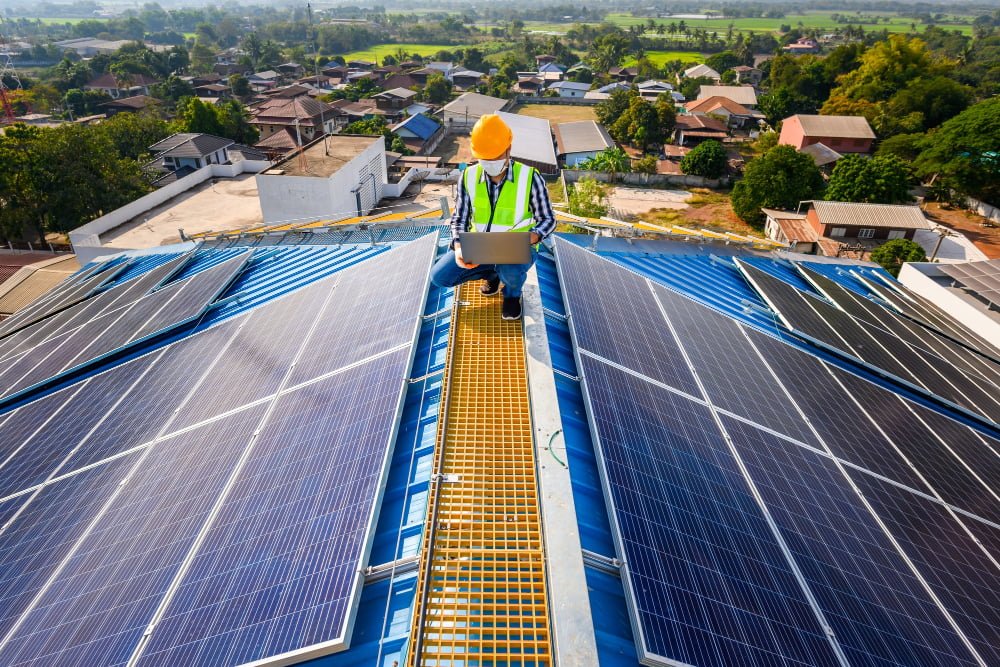
This technology uses solar panels to power a cooling system that works in tandem with traditional HVAC systems or as a standalone unit. Solar air conditioning is not only energy-efficient but also reduces your carbon footprint by using renewable energy sources.
The process of how it works is simple: The sun’s rays are absorbed by the solar panels, which convert them into electricity that powers the compressor and fan motors of an AC unit. This means that during peak hours when temperatures are at their highest, you can still enjoy cool indoor temperatures without worrying about high electricity bills.
Ice-Powered Air Conditioning
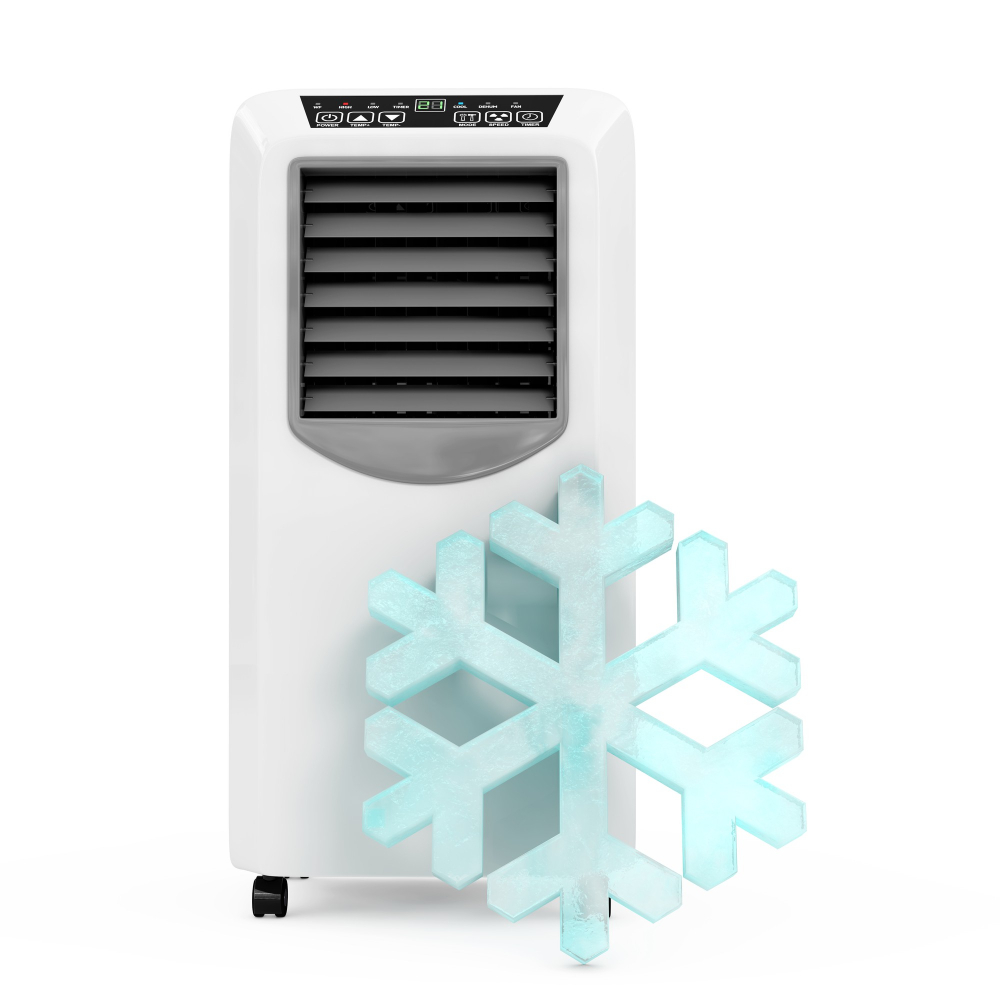
This system uses ice as a coolant instead of electricity, making it an eco-friendly and cost-effective option for cooling your home during the hot summer months. The process involves freezing water in a tank overnight when energy demand is low, then using that stored ice to cool the air during peak hours when energy demand is high.
Not only does this method save you money on your monthly utility bills, but it also reduces strain on the power grid and helps reduce carbon emissions. However, before installing an ice-powered AC unit in your home or office building, make sure to consult with a professional HVAC technician who can assess whether this system would be suitable for your specific needs and climate conditions.
Natural Ventilation
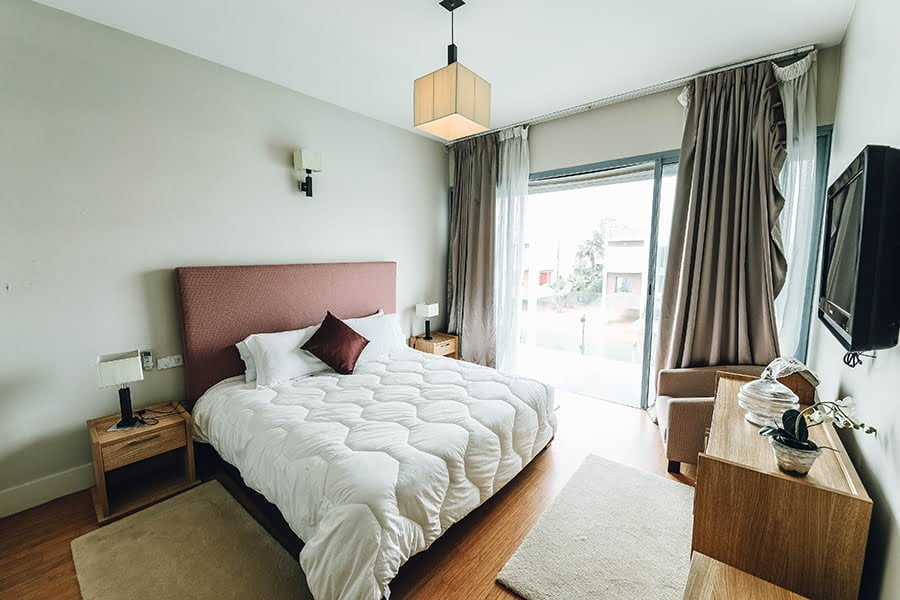
This technique involves using outdoor air to regulate indoor temperatures, reducing the need for artificial cooling systems. Natural ventilation can be achieved in several ways, such as opening windows and doors strategically or installing vents that allow fresh air to circulate throughout your home.
To maximize the benefits of natural ventilation, it’s essential to understand how airflow works in your space. For instance, you should know which direction prevailing winds blow from so that you can open windows on opposite sides of a room or house for cross-ventilation.
Consider investing in window treatments like blinds or shades that block direct sunlight during peak hours while still allowing airflow into your space. You could also install ceiling fans or portable fans near open windows and doors for added circulation.
Natural ventilation is an excellent way to reduce energy consumption while maintaining a comfortable indoor climate during mild weather conditions.
Wind Towers
These towers work by capturing the wind at a high level and directing it down into the building through a series of ducts or shafts. As the air moves through these channels, it cools down due to evaporation, which results in a refreshing breeze inside.
The concept behind Wind Towers is simple yet effective: they use natural resources (wind) to provide ventilation without relying on electricity or other energy sources. This makes them an eco-friendly option for cooling homes while also reducing energy bills.
In modern times, Wind Towers have been adapted with new materials and designs that make them more efficient than ever before. They can be integrated into existing HVAC systems or used as standalone units depending on your needs.
If you live in an area with consistent winds throughout the year, installing a Wind Tower could be an excellent alternative to traditional HVAC systems.
Earth Tubes
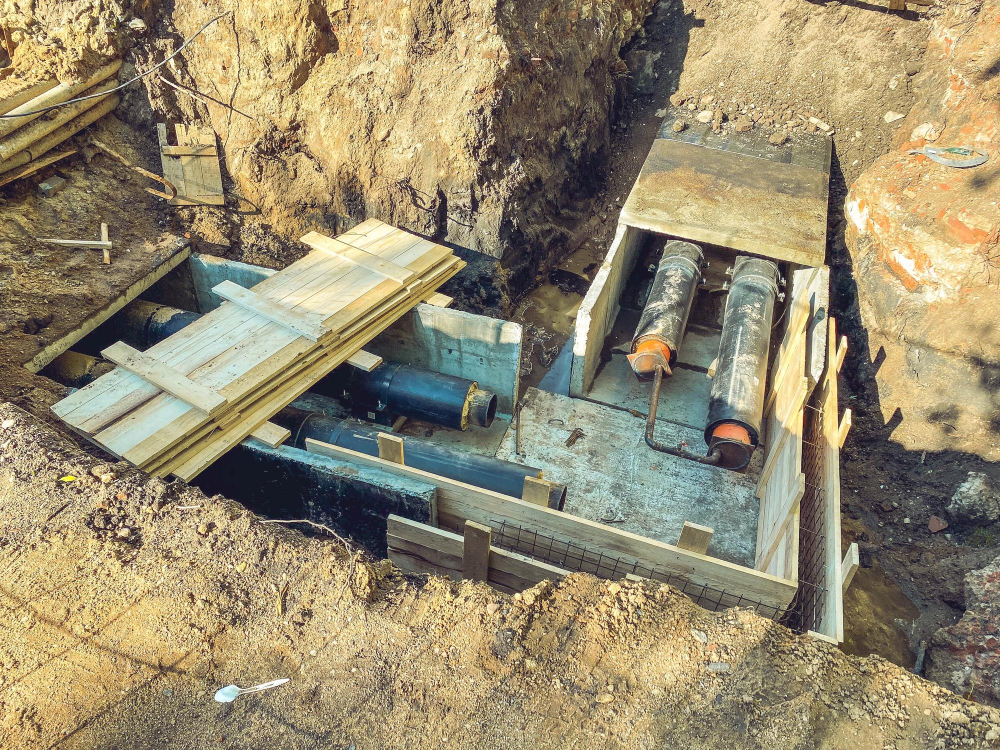
They work by using the natural temperature of the earth to cool or heat your home, depending on the season. Earth tubes consist of a series of underground pipes that circulate air from outside into your home through a ventilation system.
During summer months, hot air is drawn into the earth tubes where it cools down as it passes through the cooler soil before being circulated back inside your home. In winter months, cold air is warmed up as it passes through warm soil before entering your house.
One advantage of using earth tubes is that they require very little energy to operate since they rely solely on natural processes for heating and cooling. They can be installed in both new and existing homes with minimal disruption.
However, there are some limitations when considering this option such as high installation costs due to excavation requirements which may not make them suitable for all homeowners.
Trombe Walls
These walls consist of a thick, heat-absorbing material (such as concrete or stone) that is placed directly behind a large glass panel facing the sun. The sunlight passes through the glass and heats up the wall, which then radiates warmth into your home.
One of the benefits of Trombe walls is that they can be used in both new construction projects and retrofitted onto existing homes. They are also relatively low-maintenance once installed, requiring only occasional cleaning to keep them functioning properly.
However, there are some considerations to keep in mind when installing Trombe walls. For example, they work best on south-facing windows with unobstructed access to sunlight throughout most of the day.
You’ll need enough space between your interior living spaces and exterior Trombe wall so that air can circulate freely between them.
Hybrid HVAC Systems
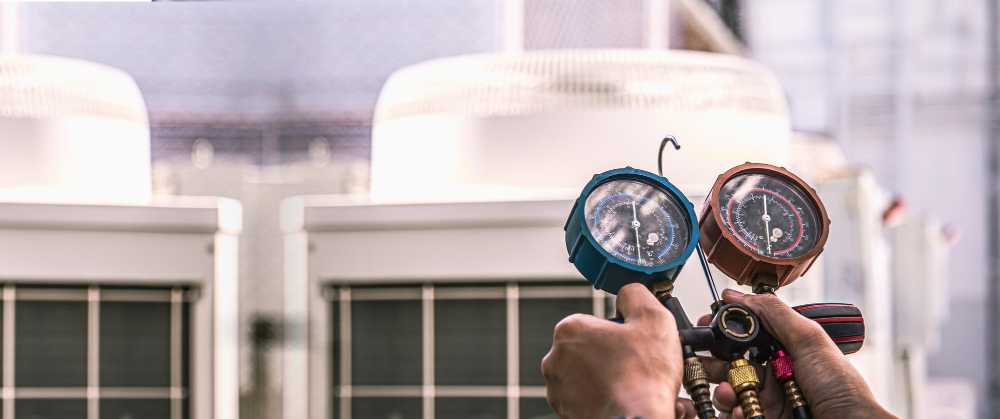
These systems use both electric and gas power to heat or cool your home, depending on the outdoor temperature. When it’s cold outside, the system uses gas power to heat your home efficiently.
On warmer days, it switches over to electric power for cooling.
One of the benefits of hybrid HVAC systems is that they can save you money on energy bills while still providing reliable comfort throughout all seasons. They also have a longer lifespan than traditional HVAC units since they don’t work as hard during extreme temperatures.
Another advantage is that these hybrid systems are environmentally friendly because they reduce greenhouse gas emissions by using less fossil fuel compared to conventional heating and cooling methods.
Variable Refrigerant Flow
These systems use refrigerant to transfer heat between indoor and outdoor units, allowing for precise temperature control in individual rooms or zones. VRF systems are highly efficient and can save up to 30% on energy costs compared to traditional HVAC systems.
One of the main advantages of VRF is its flexibility. It can be used for both heating and cooling, making it an all-in-one solution for year-round comfort.
Because each indoor unit operates independently from the others, you have complete control over which areas of your home receive heating or cooling at any given time.
Another benefit is that VRF requires less ductwork than traditional HVAC systems since it uses small pipes instead of large air ducts. This makes installation easier and less invasive while also reducing the amount of space needed for equipment.
If you’re looking for a versatile system that provides precise temperature control with high efficiency levels while saving money on energy bills – then Variable Refrigerant Flow may be just what you need!
FAQ
What is more efficient than HVAC?
Heat pumps are more efficient than HVAC systems, as they consume less electricity, dehumidify air better, and are more efficient than electric resistance heating sources.
What are the top innovative technologies emerging as alternatives to traditional HVAC systems?
Innovative alternatives to traditional HVAC systems include geothermal heat pumps, solar-assisted cooling, radiant floor heating, dedicated outdoor air systems, and energy recovery ventilators.
How do passive cooling and heating methods compare to HVAC systems in terms of energy efficiency?
Passive cooling and heating methods are generally more energy efficient compared to HVAC systems, as they utilize natural elements and building design without needing additional energy for operation.
What role do sustainable building materials play in reducing the need for conventional HVAC systems?
Sustainable building materials contribute to reduced reliance on conventional HVAC systems by enhancing insulation and heat retention, resulting in improved energy efficiency and minimized heating and cooling requirements.
Recap
